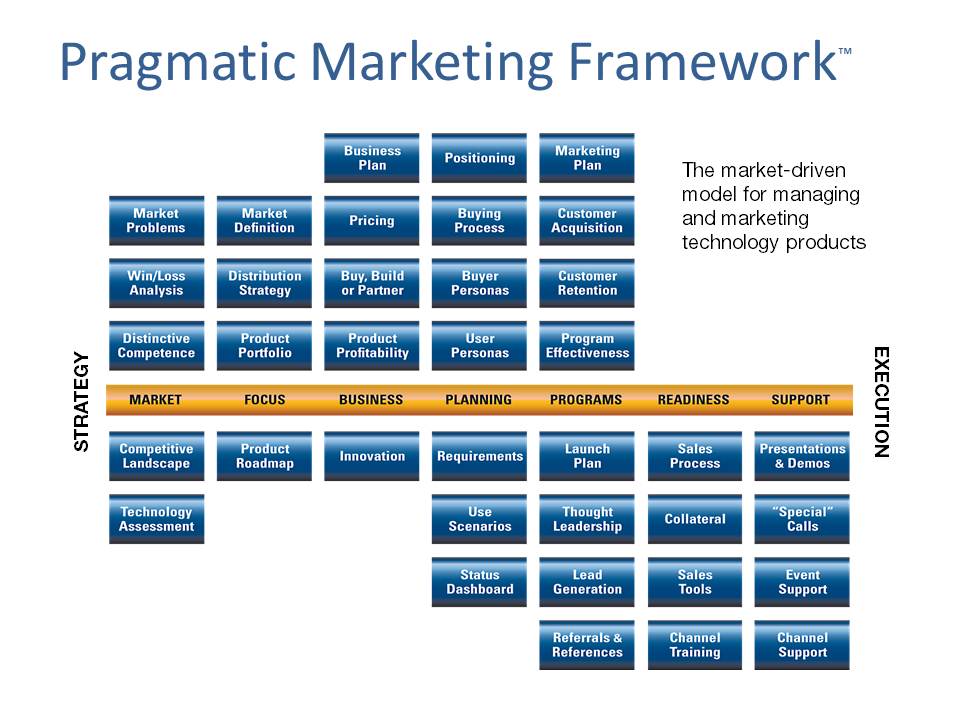
As product developers and marketers, it sometimes feels as if we’re lost in the woods without a compass, constantly changing course as we respond to requests for the latest product updates, fielding sales requests, or scheduling yet another status meeting. With so many voices across your business, it’s difficult to establish your bearings and move forward with a productive program for managing product strategy to execution.
For more than 20 years, the Pragmatic Marketing Framework has evolved to help product management and product marketers get our bearing. Planview has not only been leveraging this approach internally in our product group, but we also think about this approach when it comes to helping our customers bring their products to market faster via work and resource management.
In this blog series, we will examine how the Pragmatic Marketing Framework and purpose-built technology can help product developers and owners overcome the following challenges and corresponding questions:
- Building products that make sense on an individual level but fail to fit together as part of a larger picture to solve a bigger problem. How can you build products that the market and your customers actually care about?
- Struggling through a lack of clarity on the kinds of problems that need to be solved. How can you get everyone on the same page for your next release?
- Tracking the competition to understand why you’re winning or losing. With all the sales channels, tools, and online information available today, how can you track what genuinely matters and elevate the information that helps you understand where your company or product stands against the competition?
- Managing product roadmaps that remain current and keep your sales teams up to date at the same time. How can you keep everyone on the same page to know what’s coming and what’s not?
- Conducting product launches that can’t be ignored. How can you develop and maintain a high-impact product launch schedule and process that gets the attention it deserves and prevents the market from overlooking you?
- Keeping sales updated with the latest tools? How can you reduce the number of calls, meetings, and emails from sales reps saying they can’t find what they need to advance prospects in the sales process?
The most efficient way of solving these problems is to understand your role and what it looks like through the Pragmatic Marketing Framework. This approach covers all the activities that product developers or marketers must execute across their organizations.
Looking at the framework below you’ll see that it’s broken up into a quadrant that on the left covers activities that are more strategic like understanding your market problems or why you’re winning or losing against your competition. On the right, you’ll find items that are more executional like arming your sales teams with the right materials or developing presentations and product demos.
You’ll also see there is a difference between top and bottom. Activities on the upper half are generally more business oriented where on the bottom they are more focused on technology.
All of these boxes when tied together are designed to empower your teams with the activities that must happen during strategy and execution as it pertains to managing products. You might not address all of these yourself, but they all need to be done. The issue is where you spend your time and how you allocate it as you collaborate with sales, marketing, services or any part of the business that plays an integral role in your development process.
Now that you are familiar with the framework, continue reading part 2 (understanding market problems, win loss, and the competition) and part 3 (share relevant roadmaps with teams and customers) of this series, where we cover several areas of the Pragmatic Marketing Framework as they pertain to various aspects of product development and marketing. I demonstrate what it looks like to have an organized and central point of access for everybody in the organization leveraging Planview solutions. This is where the framework really comes alive to serve as that single source of truth.
For a deeper dive into the content now, check out the webcast I did with Paul Young and Carrie Nauyalis, titled: A Source of Truth for Centralizing the Pragmatic Marketing Framework.






